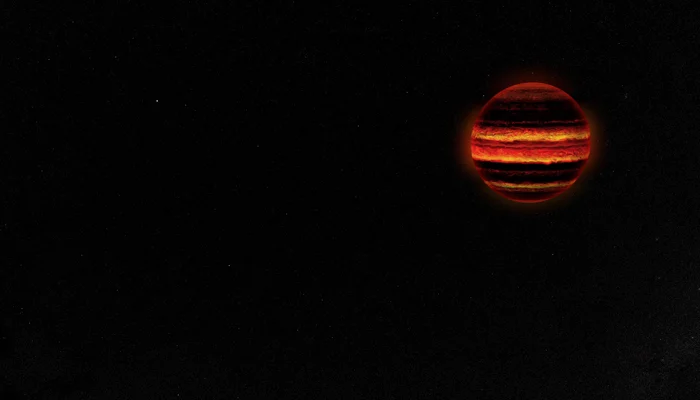Scientists using the powerful James Webb Space Telescope have made a surprising discovery: a brown dwarf, or a failed star, emitting methane.
This finding challenges previous assumptions about these cold celestial bodies, which were not expected to support conditions conducive to methane emissions that produce infrared light.
The discovery was made as the James Webb Telescope investigated 12 similar failed stars, known as brown dwarfs, which have the potential to generate aurorae similar to the northern lights.
The brown dwarf in question is named CWISEP J193518.59–154620.3 or W1935 and is situated approximately 47 light-years away from Earth, as reported by Space.com. Its estimated temperature is around 400 degrees Fahrenheit (204 degrees Celsius).

Findings published in the journal Nature suggest that the observed aurorae may be caused by a moon orbiting the brown dwarf, although this moon has yet to be identified.
Brown dwarfs, according to NASA, occupy a unique space between stars and planets. While they form similarly to stars, they never become dense and hot enough to initiate hydrogen fusion and become true stars.
Jackie Faherty, team leader and senior education manager at the American Museum of Natural History, expressed excitement about the discovery, stating, “We were confused about what we were seeing at first, but ultimately, that transformed into pure excitement at the discovery.”
Scientists were initially puzzled by the presence of aurorae on the brown dwarf, as these phenomena are typically associated with solar winds interacting with planetary magnetic fields, such as on Earth, Saturn, and Jupiter.
The hypothesis emerging from this discovery suggests the presence of a yet-to-be-identified moon around the brown dwarf. This concept draws parallels with the natural satellites of Jupiter and Saturn, which emit materials into space, potentially contributing to the observed aurorae.
Overall, this finding adds new dimensions to our understanding of brown dwarfs and their potential for dynamic interactions within their planetary systems.






























